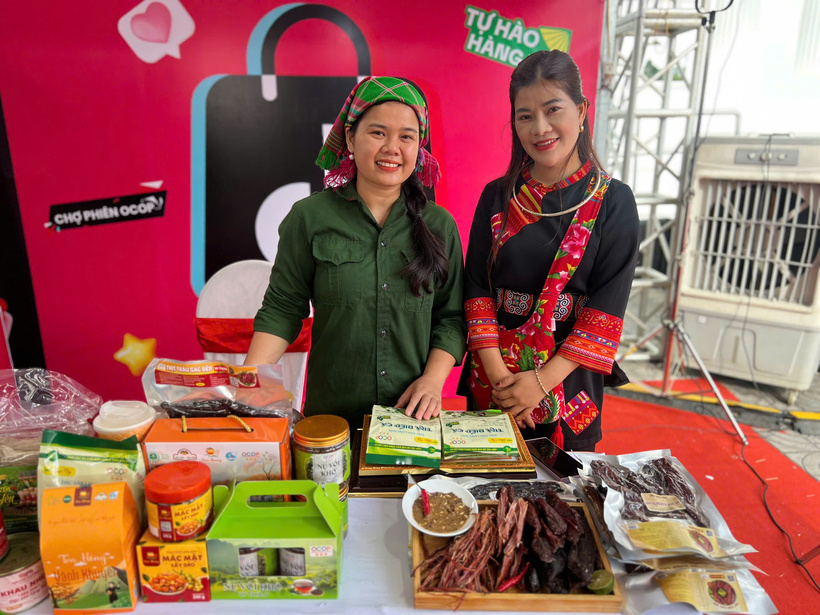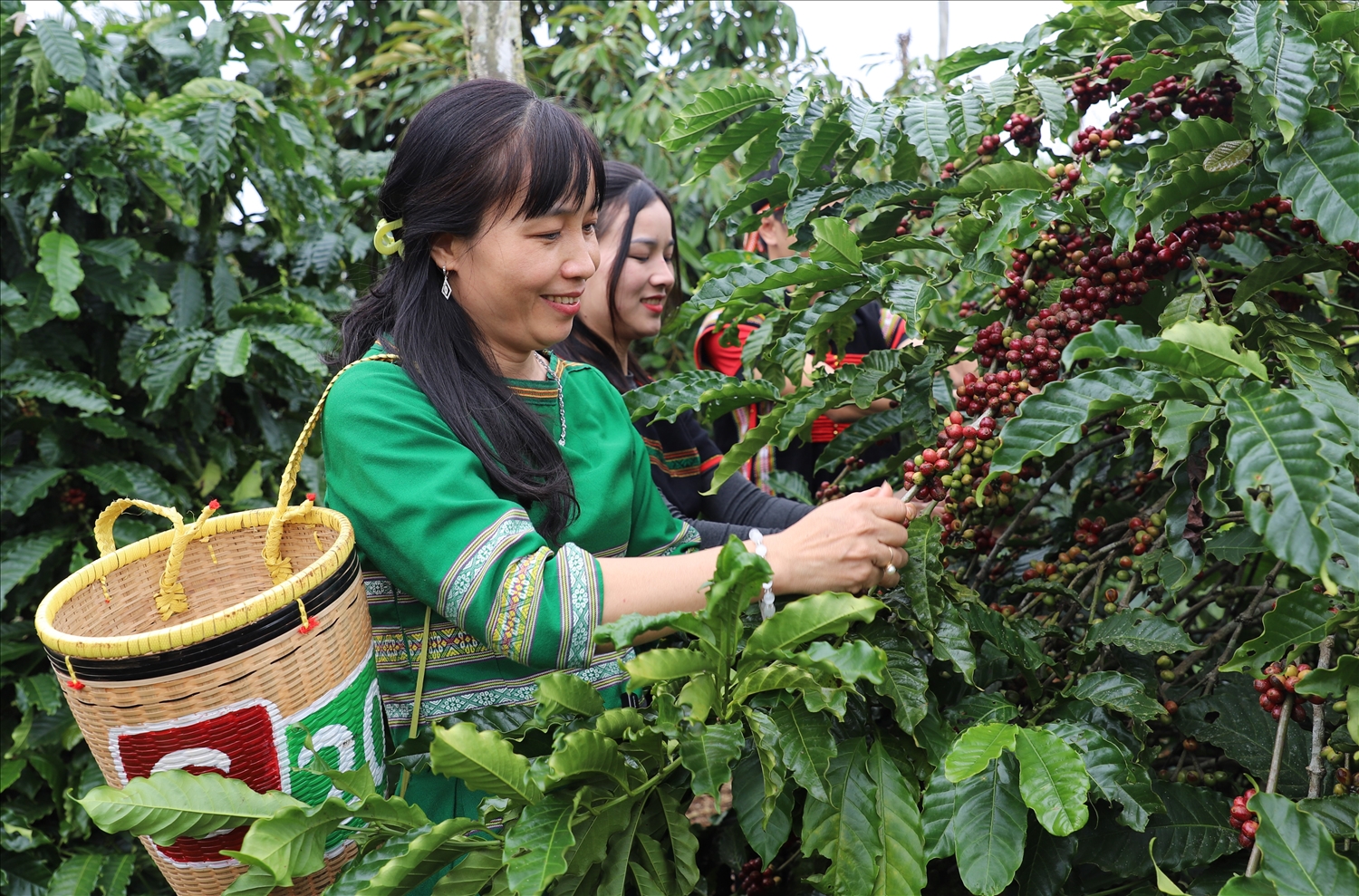
VCC reviews 2025, sets key tasks to boost competition and consumer protection
19:05 | 23/03/2025 14:11 | 08/01/2026Industry
Speaking with Vietnam Economic News on the sidelines of the event “Digital transformation for traditional markets and promoting e-commerce” held at Vincom Plaza Lang Son in mid-August, Mr. Vo Van Khanh, representative of the Vietnam E-Commerce Association in the central region, emphasized that bringing ethnic minority products onto e-commerce platforms is an inevitable path that creates sustainable opportunities for local communities to expand their reach.

Mr. Vo Van Khanh, representative of the Vietnam E-Commerce Association in the central region
Creating momentum for ethnic minority products
- What is the main goal and significance of this digital transformation and e-commerce training program in Lang Son, especially for ethnic minority products?
Mr. Vo Van Khanh: This program is more than a theoretical training course. It combines learning with practice, connecting local products with digital platforms. For three days, Vincom Plaza Lang Son was transformed into a “digital stage,” showcasing over 300 OCOP-certified and ethnic minority specialties. From juicy Chi Lang custard apples and fragrant roast duck to spicy bamboo shoots, brocade fabrics, and star anise essential oil, all were presented as “cultural ambassadors” of the northern highlands.
The significance lies in the fact that, for the first time, local producers could see their goods appear on a new “stage” - the e-commerce marketplace. In the past, their markets were limited to local buyers. Now, through digital technology, these products can reach consumers nationwide and even abroad. This marks a pivotal shift.
The Vietnam E-Commerce and Digital Economy Agency under the Ministry of Industry and Trade and the Vietnam E-commerce Association have worked closely with the provincial Department of Industry and Trade, partnering with major platforms such as TikTok Shop, Shopee, ZaloPay, Viettel Post, Sapo, and Haravan to build a “mini digital ecosystem” right in Lang Son. This demonstrates that state support is not just at the policy level but extends directly into traditional markets and vendor stalls.
I think that for ethnic minority producers, the greatest significance is building confidence. They can see that e-commerce is no longer abstract or distant but accessible and practical. A single online order can generate much higher value than selling at the local market. More importantly, it affirms that their products are as competitive as any others, provided they are marketed effectively.
- Why are livestreaming skills and knowledge of e-commerce considered crucial for helping ethnic minority producers expand their reach?
Mr. Vo Van Khanh: Livestreaming is no longer a trend but has become a dominant sales channel in e-commerce. For ethnic minority communities, it is the simplest entry point into the digital marketplace. With just a smartphone and a stable internet connection, they can transform a small stall into a “window” reaching thousands of customers nationwide.
In the past, many vendors found the idea of e-commerce vague or intimidating. But when they witnessed KOLs such as Co Tho Oi 68 and Mai Tay Bac livestreaming right at the event, selling custard apples, bamboo shoot pickles, or brocade scarves, e-commerce suddenly became “real.” Participants not only listened to lectures but also practiced livestreaming themselves, learning how to interact with customers and complete online sales. This created a powerful psychological breakthrough.
Livestreaming also carries another strength: storytelling. Today’s consumers don’t just buy products; they buy the stories behind them. When ethnic producers share how Chi Lang custard apples are grown, explain the traditional recipe for Lang Son roast duck, or describe the painstaking weaving of brocade cloth, customers see more than just products, they see culture and human connection. That intangible value is something no marketing campaign can replace.
From a management perspective, focusing on livestreaming is also a strategic choice. It provides a simple yet effective entry point for communities into e-commerce. If training had focused only on legal compliance, payments, or logistics, many participants might have struggled to keep up. But with livestreaming, they can see immediate results sometimes selling their first online orders the very same day, laying the foundation for a longer journey.

Instead of focusing only on compliance, payments, or logistics, livestreaming let participants see instant results, often making their first online sales the same day and starting a longer journey.
Changing the way of doing business
- What changes do you expect in the way ethnic minority communities conduct business through e-commerce in the coming years?
Mr. Vo Van Khanh: I expect a fundamental but gradual shift. Initially, communities will learn to balance both traditional and digital sales, selling at the market while also selling online. This will not diminish the cultural value of traditional markets but will expand business opportunities.
Within the next one to two years, I believe many small traders and cooperatives will become true “digital entrepreneurs.” They will know how to leverage livestreaming to promote products, use e-wallets for fast payments, and connect with logistics networks for nationwide delivery. Most importantly, they will come to see that e-commerce is not something complex, but part of everyday life.
Of course, challenges remain. Perishable products like roast duck or fresh custard apples face logistical hurdles in long-distance transport. But with technological solutions and improved packaging, these issues can be gradually overcome. The key is persistence and patience.
The Lang Son Provincial Department of Industry and Trade has shown strong commitment. As Director Nguyen Dinh Dai stressed: “If businesses, cooperatives, and traders know how to harness technology, they all have the opportunity to thrive. The key lies in equipping them with practical knowledge and skills.” This is not just a call to action but a roadmap for the future.
Personally, I believe that within the next five years, we will witness profound changes. Many ethnic minority products will establish strong brands on e-commerce platforms. Communities will move beyond the cycle of “good harvest, low prices,” steadily raising incomes and strengthening their market position. More broadly, e-commerce will evolve from being a sales channel into a cultural bridge, sharing ethnic identity with the world.

19:05 | 23/03/2025 14:11 | 08/01/2026Industry

19:05 | 23/03/2025 14:08 | 08/01/2026Trade

19:05 | 23/03/2025 14:07 | 08/01/2026Trade

19:05 | 23/03/2025 14:06 | 08/01/2026Trade

19:05 | 23/03/2025 14:03 | 08/01/2026Industry